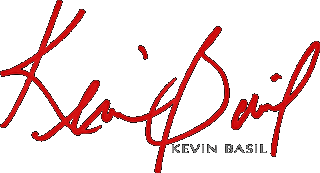Reflections on L’Engle’s Aesthetics
Warning: Undefined property: linknotes::$are_links in /var/www/vhosts/basil/kbsite/blog/wp-content/plugins/linknotes.php on line 73
In the wake of Madeleine L’Engle’s recent passing, I went to Barnes and Noble last night and picked up Walking on Water: Reflections on faith and art. I love it, of course: Who could not love a book by one of the best Christian writers of the last century on faith and art? However, there is one paragraph that truly irritates. In a chapter entitled, “Icons of the True,” she puts in the following paeon to a relativism vis á vis art:
What is a true icon of God to one person may be blasphemy to another. And it is not possible for us flawed human beings to make absolute, zealous judgments as to what is and what is not religious art. I know what is religious art for me. You know what is religious art for you. And they are not necessarily the same. Not everyone feels pulled up to heavenly heights in listening to the pellucid, mathematically precise structure of a Bach fugue. The smarmy picture of Jesus which I find nauseating may be for someone else, a true icon.
I do not relate. Perhaps my understanding of truth is antiquated and naïve in this post-Wittgenstein world, but I still believe it means “corresponds (in some sense of ‘corresponds’) to a reality that exists external to me.” A true icon is one that bears a resemblance to its subject. I do not mean by this a mean verisimilitude. Rather, something about the work must somehow reveal something true. And while the revelation comes from our participation in the work as viewers, readers, or listeners, it does not follow that Warner Sallman’s Head of Christ, or any of his devotional imagery, is perhaps true for some. To say so is a pusillanimous evasion of the possibility that beauty may have an antonym (to use an expensive word that L’Engle uses twice in the first two chapters).
Naturally, when she quotes Bishop Kallistos (Ware), I am considerably warmer. His grace writes in the journal Sobornost:
an abstract composition by Kandinsky or Van Gogh’s landscape of the cornfield with birds… is a real instance of divine transfiguration, in which we see matter rendered spiritual and entering into the “glorious liberty of the children of God.” This remains true, even when the artist does not personally believe in God. Provided he is an artist of integrity, he is a genuine servant of the glory which he does not recognize, and unknown to himself there is “something divine” about his work. We may rest confident that at the last judgment the angels will produce his works of art as testimony on his behalf.
(If that quote is reproduced in one of the many collections of his essays — The Inner Kingdom, perhaps — I would be grateful if someone would point out where I might read it in its total context.)
She closes the second chapter with this line, which I love: “There is nothing so secular that it cannot be sacred, and that is one of the deepest meanings of the Incarnation.”
